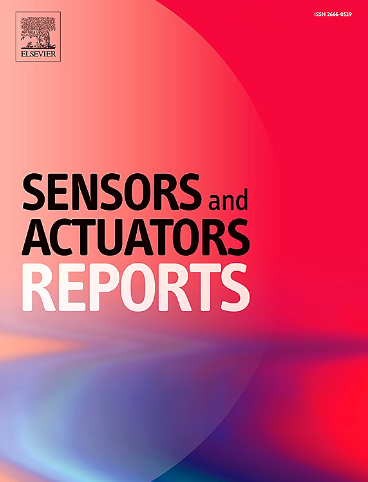一种将辣根过氧化物酶和乳酸氧化酶共同固定在甘蔗基三维碳纳米球交联碳气凝胶上的双酶乳酸生物传感器
IF 7.6
Q1 BIOTECHNOLOGY & APPLIED MICROBIOLOGY
引用次数: 0
摘要
本研究通过将乳酸氧化酶(LOD)和辣根过氧化物酶(HRP)共固定在三维(3D)碳纳米球交联碳气凝胶(3D- cncas)修饰的丝网印刷电极(SPE)上,开发了一种新型的双酶乳酸生物传感器。3D-CNCAs具有较大的表面积和多孔结构,在促进HRP电活性中心与生物传感器电极之间的直接电子转移方面起着至关重要的作用。对3D-CNCAs悬浮液的投加量、两种酶的配比、缓冲液pH和操作电位等实验参数进行了优化。双酶乳酸生物传感器对浓度范围为1 ~ 1690 μM的乳酸具有线性电流响应,检测限为0.23 μM (S/N = 3),优于基于LOD单型酶的生物传感器。该双酶乳酸生物传感器还具有较高的选择性、再现性、重复性和长期稳定性(保存30天后为原始值的87%),并进一步应用于乳酸乳膏和商业饮料稀释后真实样品的乳酸检测。双酶乳酸生物传感器的优异分析性能表明了双酶乳酸生物传感器相对于单型酶乳酸生物传感器的优势,具有广阔的应用前景。本文章由计算机程序翻译,如有差异,请以英文原文为准。
A bienzymatic lactate biosensor with co-immobilization of horseradish peroxidase and lactate oxidase on sugarcane-derived three-dimensional carbon nanoballs cross-linked carbon aerogels
In this work, a novel bienzymatic lactate biosensor was developed by co-immobilization of lactate oxidase (LOD) and horseradish peroxidase (HRP) onto the screen-printed electrode (SPE) modified by the three-dimensional (3D) carbon nanoballs cross-linked carbon aerogels (3D-CNCAs), which is derived from the biomass of sugarcane. The 3D-CNCAs, with large surface area and porous structure, play a crucial role in facilitating direct electron transfer between the electroactive center of HRP and the biosensor electrode. The experimental parameters including the amount of 3D-CNCAs suspension, the ratio of the two enzymes, the buffer pH and the operation potential were optimized. The bienzymatic lactate biosensor exhibits linear current response for lactate in the concentration ranges of 1-1690 μM, with a detection limit of 0.23 μM (S/N = 3), which is superior to the one based on monotypic enzyme of LOD. The bienzymatic lactate biosensor also exhibits a high level of selectivity, reproducibility, repeatability and long-term stability (87% of the original value after storage for 30 days), and was further applied in lactate detection in diluted real samples of lactic acid cream and commercial beverage. The outstanding analytical performance of the bienzymatic lactate biosensor demonstrates the preponderance of the bienzymatic over the one based on monotypic enzyme, and holds broad application prospects in the future.
求助全文
通过发布文献求助,成功后即可免费获取论文全文。
去求助
来源期刊

Sensors and Actuators Reports
Multiple-
CiteScore
9.60
自引率
0.00%
发文量
60
审稿时长
49 days
期刊介绍:
Sensors and Actuators Reports is a peer-reviewed open access journal launched out from the Sensors and Actuators journal family. Sensors and Actuators Reports is dedicated to publishing new and original works in the field of all type of sensors and actuators, including bio-, chemical-, physical-, and nano- sensors and actuators, which demonstrates significant progress beyond the current state of the art. The journal regularly publishes original research papers, reviews, and short communications.
For research papers and short communications, the journal aims to publish the new and original work supported by experimental results and as such purely theoretical works are not accepted.
 求助内容:
求助内容: 应助结果提醒方式:
应助结果提醒方式:


